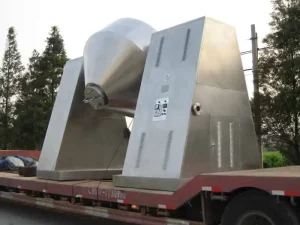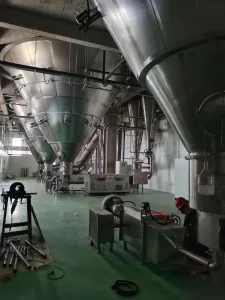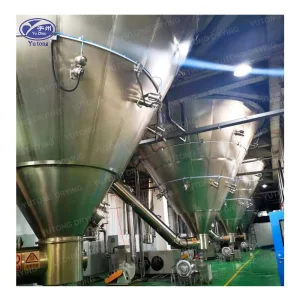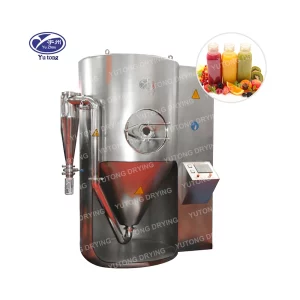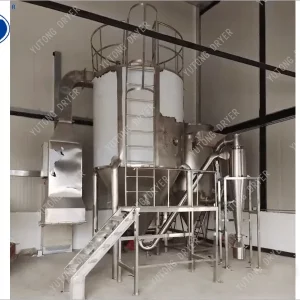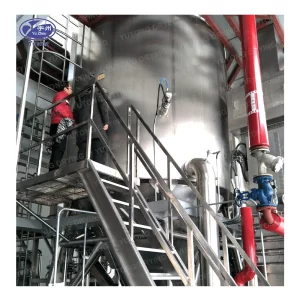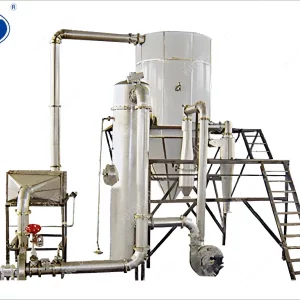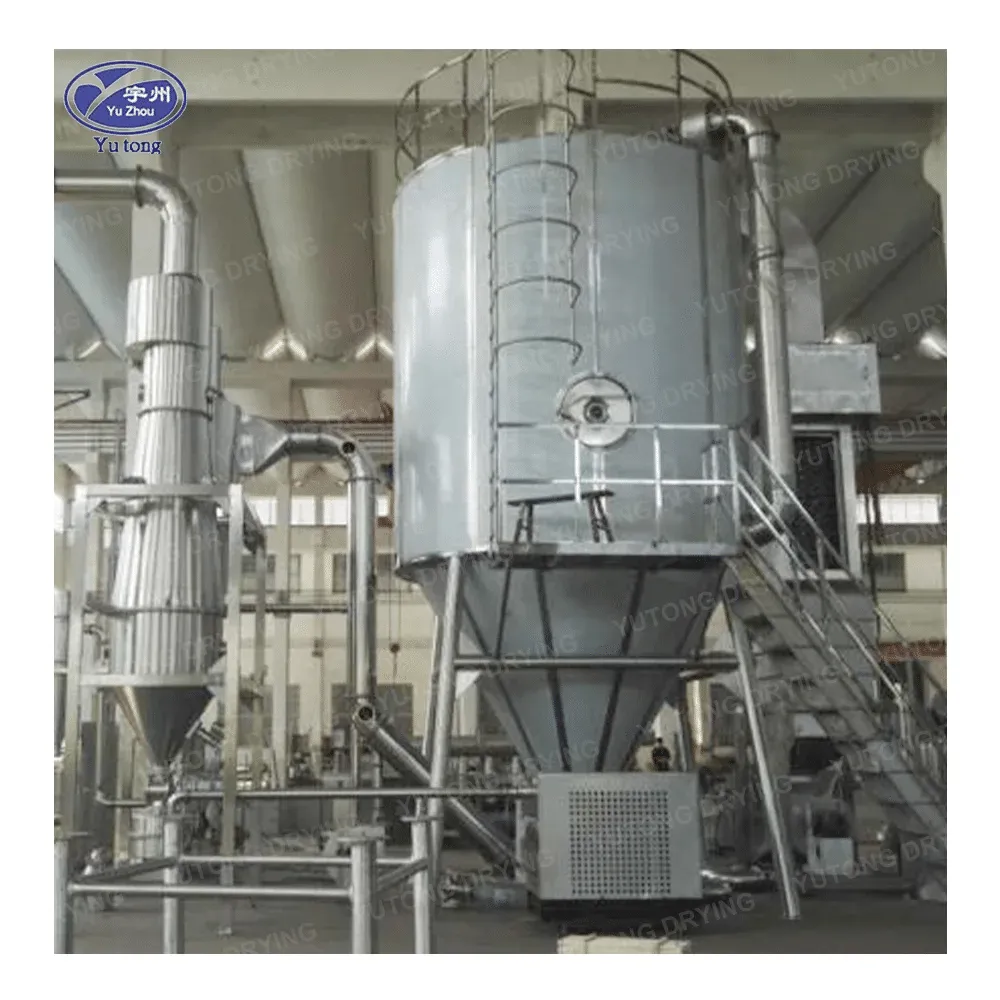Cone dryers, also known as conical dryers, are specialized industrial drying equipment used in various industries, including pharmaceuticals, chemicals, food processing, and minerals. These dryers are designed to efficiently remove moisture from powders, granules, and other solid materials. Their unique conical shape provides several advantages over traditional drying methods, such as improved mixing, reduced processing time, and energy savings. This article will explore the design, applications, and advantages of cone dryers, providing a comprehensive understanding of their capabilities and benefits.
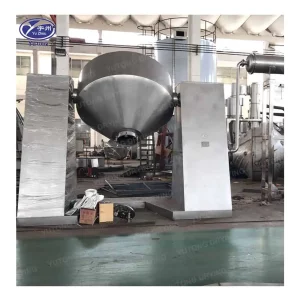
Design and Operation of Cone Dryers
Cone dryers feature a conical-shaped vessel with an agitator or stirrer at the bottom. The vessel is typically made of stainless steel or other corrosion-resistant materials to ensure durability and easy cleaning. The conical shape allows for efficient material flow and mixing, while the agitator ensures thorough contact between the material and the drying medium.
Operation of a cone dryer involves loading the wet material into the conical vessel. The agitator is then activated, causing the material to move up the sloping walls of the cone and then fall back down, creating a cascading effect. This movement promotes even distribution of the material and enhances heat transfer between the material and the drying medium.
The drying medium, which can be hot air, inert gas, or another suitable fluid, is introduced into the cone dryer through a nozzle or inlet at the base of the cone. The heated medium flows upward through the material, evaporating the moisture content. The dried material is discharged from the bottom of the cone, while the moist air or vapor is vented out through an exhaust system.
Applications of Cone Dryers
Cone dryers find applications across various industries due to their versatile design and efficient operation. Some of the primary applications include:
1. Pharmaceuticals: Cone dryers are widely used in the pharmaceutical industry for drying active pharmaceutical ingredients (APIs), intermediates, and excipients. They ensure uniform drying, preventing agglomeration and maintaining the integrity of the material.
2. Chemicals: In the chemical industry, cone dryers are employed for drying various chemical compounds, catalysts, and pigments. They can handle both free-flowing and cohesive materials, making them suitable for a wide range of applications.
3. Food Processing: Cone dryers are used in the food processing industry for drying food powders, spices, and flavorings. They can handle temperature-sensitive materials without causing degradation or loss of flavor.
4. Minerals: Cone dryers are also used in the minerals industry for drying powders, granules, and ores. They can handle abrasive materials without significant wear and tear, ensuring long-lasting performance.
Advantages of Cone Dryers
Cone dryers offer several advantages over traditional drying methods, making them a preferred choice in various industries. Some of the key advantages include:
1. Improved Mixing: The conical shape and agitator design of cone dryers promote efficient mixing of the material, ensuring uniform drying and preventing agglomeration. This results in consistent product quality and reduces the risk of batch-to-batch variability.
2. Reduced Processing Time: Cone dryers can achieve faster drying rates compared to other drying methods due to the cascading effect and improved heat transfer. This leads to shorter processing times and increased productivity.
3. Energy Efficiency: The design of cone dryers minimizes heat loss, resulting in higher energy efficiency. The cascading motion of the material creates a larger surface area for heat transfer, reducing the amount of energy required for drying.
4. Versatility: Cone dryers can handle a wide range of materials, including powders, granules, and temperature-sensitive substances. They can accommodate both free-flowing and cohesive materials, making them suitable for various applications across different industries.
5. Easy Cleaning and Maintenance: The conical shape of cone dryers facilitates easy cleaning and maintenance. The smooth surfaces and minimal crevices make it simple to clean the equipment, ensuring compliance with hygiene and safety standards.
6. Reduced Dust Emissions: Cone dryers are equipped with dust collection systems that minimize dust emissions during the drying process. This helps maintain a clean working environment and reduces the risk of dust-related hazards.
7. Scalability: Cone dryers are available in various sizes, allowing for scalability to match the production requirements of different facilities. They can be customized to suit specific needs, such as incorporating jacketed vessels for temperature control or incorporating in-line filtration systems for improved product quality.
8. Low Maintenance: Due to their robust design and durable construction, cone dryers require minimal maintenance. Regular inspections and occasional replacement of wear parts are typically sufficient to ensure optimal performance.
9. Batch Processing: Cone dryers are well-suited for batch processing, allowing for precise control over drying conditions and ensuring consistent product quality. This is particularly advantageous in industries where batch-to-batch consistency is critical.
10. Space Efficiency: Cone dryers have a compact design, making them suitable for facilities with limited space. They can be easily integrated into existing production lines without requiring extensive modifications.
Case Studies
Case Study 1: A pharmaceutical company was experiencing issues with inconsistent drying of an API. The material tended to form agglomerates during the drying process, leading to batch failures and poor product quality. By switching to a cone dryer, the company was able to achieve uniform drying and prevent agglomeration. The cascading motion of the material ensured thorough mixing and even heat distribution, resulting in consistent product quality and increased production efficiency.
Case Study 2: A chemical manufacturing plant was looking to reduce its energy consumption and improve the drying process of a temperature-sensitive compound. The plant opted for a cone dryer, which offered improved heat transfer and reduced processing time. The cascading motion of the material facilitated faster drying rates, while the conical shape minimized heat loss. As a result, the plant achieved significant energy savings and improved product quality without compromising the integrity of the temperature-sensitive compound.
Case Study 3: A food processing company needed a drying solution for a spice blend that was prone to clumping and losing flavor during the drying process. The company implemented a cone dryer, which provided gentle handling of the material and prevented clumping. The cascading motion of the material ensured even heat distribution, preserving the flavor and aroma of the spice blend. The cone dryer also offered improved energy efficiency, reducing the company’s operating costs.
Cone dryers are versatile and efficient drying equipment used in various industries, including pharmaceuticals, chemicals, food processing, and minerals. Their unique conical shape and agitator design promote improved mixing, reduced processing time, and energy savings. The advantages of cone dryers, such as improved mixing, reduced processing time, energy efficiency, versatility, easy cleaning, reduced dust emissions, scalability, low maintenance, batch processing capability, space efficiency, and improved product quality, make them a preferred choice for many applications. By understanding the design, applications, and advantages of cone dryers, businesses can make informed decisions and optimize their drying processes for improved productivity and cost savings.
FAQs
Q1: How do cone dryers differ from other types of dryers?
A1: Cone dryers differ from other types of dryers in their unique conical shape and agitator design, which promotes efficient mixing and improved heat transfer. They offer advantages such as reduced processing time, energy efficiency, and versatility, making them suitable for various applications.
Q2: Can cone dryers handle temperature-sensitive materials?
A2: Yes, cone dryers can handle temperature-sensitive materials without causing degradation. The gentle handling and even heat distribution provided by the cascading motion of the material ensure that the integrity of the material is maintained during the drying process.
Q3: How do cone dryers prevent agglomeration?
A3: Cone dryers prevent agglomeration through their conical shape and agitator design. The cascading motion of the material ensures thorough mixing, preventing the formation of lumps or agglomerates. This results in consistent product quality and reduces the risk of batch-to-batch variability.
Q4: Are cone dryers suitable for batch processing?
A4: Yes, cone dryers are well-suited for batch processing. They allow for precise control over drying conditions and ensure consistent product quality. Batch processing is particularly advantageous in industries where batch-to-batch consistency is critical.
Q5: How do cone dryers minimize dust emissions?
A5: Cone dryers are equipped with dust collection systems that minimize dust emissions during the drying process. These systems help maintain a clean working environment and reduce the risk of dust-related hazards.
Q6: Are cone dryers easy to clean and maintain?
A6: Yes, cone dryers have a conical shape that facilitates easy cleaning and maintenance. The smooth surfaces and minimal crevices make it simple to clean the equipment, ensuring compliance with hygiene and safety standards. Regular inspections and occasional replacement of wear parts are typically sufficient to ensure optimal performance.
Q7: Can cone dryers be customized to suit specific needs?
A7: Yes, cone dryers can be customized to suit specific needs. They are available in various sizes and can be modified to incorporate features such as jacketed vessels for temperature control or in-line filtration systems for improved product quality.
Q8: How do cone dryers contribute to energy savings?
A8: Cone dryers contribute to energy savings through their design, which minimizes heat loss. The cascading motion of the material creates a larger surface area for heat transfer, reducing the amount of energy required for drying. This results in higher energy efficiency and reduced operating costs.
Q9: Are cone dryers suitable for facilities with limited space?
A9: Yes, cone dryers have a compact design, making them suitable for facilities with limited space. They can be easily integrated into existing production lines without requiring extensive modifications.
Q10: How do cone dryers ensure uniform drying?
A10: Cone dryers ensure uniform drying through their conical shape and agitator design. The cascading motion of the material promotes even heat distribution, preventing hotspots and ensuring consistent drying throughout the batch. This results in improved product quality and reduced batch-to-batch variability.
In conclusion, cone dryers are specialized drying equipment that offer several advantages over traditional drying methods. Their unique design promotes efficient mixing, reduced processing time, and energy savings, making them suitable for various applications across different industries. By understanding the design, applications, and advantages of cone dryers, businesses can optimize their drying processes for improved productivity and cost savings.

